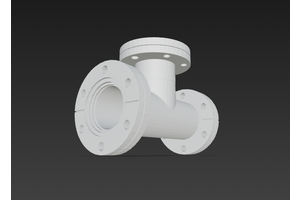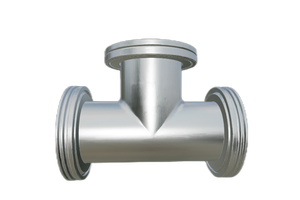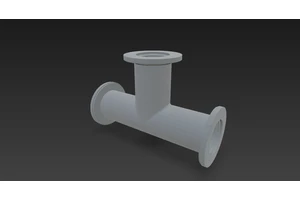-
How to Achieve an Ultra-High Vacuum Environment
To achieve an ultra-high vacuum (UHV) environment, several steps and techniques are required. UHV usually refers to pressures below10⁻⁷ Pa, where even trace amounts of gas molecules can interfere with experiments or processes.First, thevacuum chambermust be designed with suitable materials, such as stainless steel or aluminum alloys, which release very little gas and can withstand high temperatures for baking. Surfaces inside the chamber are usually polished and cleaned to reduce trapped gases.Second, the process typically begins with aroughing pump, such as a rotary vane pump or a dry scroll pump, to bring the pressure down to the low vacuum range. Once this level is reached, ahigh-vacuum pumplike a turbomolecular pump or diffusion pump is used to further reduce pressure. To reach UHV conditions,ion pumps,getter pumps, orcryogenic pumpsare often added. These pumps target the remaining molecules that mechanical pumps cannot remove effectively.Another essential step isbaking the chamber
View -
Understanding the Relationship Between Vacuum, Positive Pressure, and Negative Pressure — Plus Vacuum Unit Conversions
In industrial applications such as scientific research, biotechnology, automation, environmental engineering, and water treatment, understandingvacuum, positive pressure, and negative pressureis essential. These concepts directly impact equipment selection, system design, and process control.Below, we explain these three concepts, their interrelationship, and how to convert between different vacuum measurement units.1. Basic ConceptsAtmospheric Pressure (Normal Pressure)Atmospheric pressure refers to the air pressure exerted by the Earth’s atmosphere.Standard atmospheric pressureis defined as 101,325 Pa (Pascals) or approximately 101 kPa.For simplicity, in engineering practice, we often approximate it as100 kPa, although actual atmospheric pressure varies with altitude, temperature, and weather conditions.Negative Pressure (Vacuum)Negative pressure is any pressurelower than atmospheric pressure. This is essentially what we call avacuum.Example: When you drink through a straw, the insid
View -
Key Considerations When Selecting a Vacuum Pump
Choosing the right vacuum pump is critical to ensuring optimal performance, process stability, and equipment longevity. The selection process involves more than just meeting vacuum level requirements—it also requires evaluating environmental factors, gas composition, operational conditions, and maintenance needs. Below are the essential factors to consider when purchasing a vacuum pump:1.Vibration ImpactAssess whether the pump’s vibration during operation will affect your process or surrounding environment. If vibration is unacceptable for your application, choose a vibration-free pump or implement anti-vibration measures.2.Gas CompositionUnderstand the composition of the gas to be pumped—whether it contains condensable vapors, particulate matter, or corrosive substances. This will determine the appropriate pump type. If the gas contains vapors, dust, or corrosive gases, install auxiliary equipment such as condensers or filters at the pump inlet to protect the pump and ensure performan
View -
Advantages of Vacuum Zinc Infiltration Compared to Hot-Dip Galvanizing
Vacuum zinc infiltration is an advanced corrosion protection technology for steel components, representing a new trend in the development of steel surface treatment methods.The traditional electro-galvanizing process generally follows the steps: surface cleaning → acid pickling → galvanizing → passivation → drying → finished product. During acid pickling and passivation, wastewater containing harmful substances is generated, requiring complex wastewater treatment. Moreover, the use of chromium-based passivation introduces chromium ions—harmful to both human health and the environment—into wastewater and even onto the surface of the finished product.Vacuum zinc infiltration, on the other hand, is a clean and environmentally friendly process. It is a thermochemical treatment performed in the ferrite state, using zinc powder as the raw material. Inside a rotating, sealed container under vacuum conditions, heated steel components are brought into contact with zinc powder, allowing zinc ato
View -
Applications of Vacuum Technology in the Aerospace Industry
Vacuum science and aerospace technology are closely interconnected, with one of the most critical links beingspace environment simulation. All types of spacecraft — including launch vehicles, artificial satellites, manned spacecraft, space stations, space probes, and space shuttles — operate in the natural vacuum of outer space.1. The Space Environment and Its Impact on SpacecraftDuring spaceflight, spacecraft are exposed not only to the vacuum of space but also to solar radiation, high-energy charged particles, and extreme temperature variations. These environmental factors can:Alter or degrade the performance of materials.Reduce the sensitivity and accuracy of instruments.Cause operational malfunctions.Endanger astronaut safety in manned missions.To prevent such risks, it is essential to conductground-based space environment simulation testsbefore launch. These tests allow engineers to understand how spacecraft perform in actual space conditions, detect potential issues, and implemen
View -
Applications of Vacuum Technology in Accelerators and Controlled Nuclear Fusion
Vacuum technology plays a vital role in both particle accelerators and controlled nuclear fusion systems, ensuring the stability, efficiency, and safety of these advanced scientific devices.1. Vacuum in Particle AcceleratorsA particle accelerator is a device designed to accelerate particles to extremely high energies. These particles — such as electrons, protons, deuterons, alpha particles, and other heavy ions — are used in fundamental research as well as in medical, industrial, agricultural, and food-processing applications.Through interactions between accelerated particles and matter, accelerators can also produce a wide range of secondary charged and neutral particles, including gamma rays, neutrons, mesons, hyperons, and antiparticles.To ensure the particles travel in a straight path without scattering due to collisions with residual gas molecules, the accelerator chamber must maintain an extremely high vacuum. If the vacuum level is insufficient, the following problems may occur:
View -
Advantages of Microwave Vacuum Drying Equipment
Microwave vacuum drying equipment combines the benefits of microwave heating and vacuum technology, offering significant improvements over conventional drying methods. Its unique heating mechanism and operational efficiency make it an ideal solution for industries requiring fast, uniform, and high-quality drying.1. High EfficiencyTraditional vacuum dryers typically use steam for heating, which transfers heat from the outside to the inside of the material. This process is slow, energy-intensive, and often relies heavily on coal or other fuels.In contrast, microwave vacuum dryers use electromagnetic waves to directly heat the material from the inside out, eliminating the need for a heat transfer medium. The temperature rises rapidly — for example, 1 kW of microwave energy can heat water from room temperature to 100°C in just 3–5 minutes. This significantly shortens the drying cycle, reduces energy consumption, and increases productivity by more than four times compared to conventional me
View -
Working Principle of a Reciprocating Vacuum Pump
Areciprocating vacuum pump, also known as apiston-type vacuum pump, is one of the common devices used to obtain low vacuum. Compared with a rotary vane vacuum pump, it can be designed with a larger pumping speed. Compared with a liquid ring vacuum pump, it generally offers slightly higher efficiency. However, reciprocating pumps also have some drawbacks, including a more complex structure, larger size, and significant vibration during operation. In many applications, they can be replaced by liquid ring vacuum pumps.Structure and ComponentsA reciprocating vacuum pump typically consists of the following main parts:Cylinder– The chamber where the piston moves back and forth.Piston– Performs the reciprocating motion to create suction and compression.Crank and Connecting Rod Mechanism– Converts the rotary motion of the motor into the linear motion of the piston.Suction Valve– Allows gas to enter the cylinder from the vessel being evacuated.Exhaust Valve– Releases compressed gas from the cyl
View -
The Development History of Scroll Vacuum Pumps
The concept of scroll technology dates back to 1905, when French engineer Léon Creux filed a U.S. patent for a reversible scroll expander. However, due to the limited machining and manufacturing capabilities of the time, the precision required for the scroll plates and their spiral profiles could not be achieved. As a result, scroll machinery could not be produced for several decades.In the 1970s, the situation changed dramatically. The energy crisis, combined with the emergence of high-precision CNC machine tools, created new opportunities for scroll technology. In 1973, the U.S. company Arthur D. Little (A.D.L.) released its first research report on a scroll-type nitrogen compressor, highlighting advantages that conventional compressors could not match. This marked the beginning of rapid large-scale development and commercialization of scroll compressors.Rise of Scroll Vacuum PumpsWith the rapid growth of industries such as semiconductors, new materials, and biopharmaceuticals—and th
View -
Structure and Working Principle of Turbomolecular Pumps
A turbomolecular pump is a type of vacuum pump that uses high-speed rotating blades (rotors) to transfer momentum to gas molecules, creating a directional flow and thus evacuating the chamber. The main advantages of turbomolecular pumps include rapid startup, resistance to various types of radiation, durability under atmospheric exposure, no gas storage or desorption effects, minimal or no oil vapor contamination, and the ability to achieve clean ultra-high vacuum. These pumps are widely used in high-energy accelerators, controlled thermonuclear fusion devices, heavy-ion accelerators, and the manufacturing of advanced electronic components.Development HistoryIn 1958, W. Becker of the Federal Republic of Germany introduced the first practically viable turbomolecular pump. Since then, various designs have emerged, with the most common being vertical and horizontal configurations.A turbomolecular pump generally consists of the pump body, a rotor with blades (dynamic blades), stator blades
View
Wiki





